Did you find your well water to be orange in color and a little dusty? This can definitely be a sign of contamination of water with iron. This can happen due to various reasons. However, it is always recommended to go with the right options to find how to remove iron from well water.
What are the Best and Cheapest Ways to Remove Iron from Well Water?
You can employ several methods to remove iron from well water using a filter or without a filter. Sedimentation, water freezing, and reverse osmosis can be a few of the good options that can prove to be useful in this context. You can even use ion-exchange or aeration to remove iron from well water.
How to Remove Iron from Well Water Naturally?
There are no sure-shot methods that can be used to remove iron from well water naturally. Of course, there are a few methods used for cleaning up iron from well water naturally, but they cannot be used for all purposes. We will check a few options for the cheapest way to remove iron from well water.
The prime method you can use to remove iron from well water is to use a water softener or iron-based filter. The method used will be based on the concentration of the iron in the water. Let us discuss a couple of methods to remove iron from well water.
- Water Sedimentation
- Activated Charcoal
- Silicone & Shungite Stones
- Freezing
Well, those should be just a few of the best options if you are trying to find an answer to the question – what is the best way to remove iron from well water. If the iron concentration is considerably higher, you can opt for other advanced options.
How Does Iron Get into Well Water?
There may be several reasons why iron gets into well water. One of the common reasons can be that when water reaches the inner crust of the earth, iron in this crust gets dissolved into the water. The drinking water generally aquifers in the rainwater rocks and normally the iron in these sections gets dissolved in the water.
Yet another reason that iron can get inside your well water is due to the corrosion in the pipes. An exposure to rusty and corroded plumbing can cause the iron particles to seep into the water and make it turn orangish in color.
Types of Iron Found in Water
The major types of iron found in the water can be classified as follows:
- Ferrous iron (Fe+2)
- Ferric iron (Fe+3)
- Bacterial iron
- Organic Iron
Best Water Softener for Well Water with Iron
Having understood the essence of how iron in water can make you sick, here are a few good options that can assist you in how to remove iron in well water.
| Features | Material | Purification Method | Capacity | Dimensions |
| iSpring RCC7 High Capacity 5-Stage Reverse Osmosis Softener | Plastic | Reverse Osmosis | 75 gallons per day | 15 x 8 x 18 inches |
| Whirlpool WHELJ1 Central Water Filtration System | Plastic | Filtration | 6 gallons per minute | 10.13 x 13.44 x 33.75 inches |
| Tier1 Elite Series Water Softener | Plastic | Reduction filtration system | 11 gallons per minute | 55 x 33 x 21 inches |
iSpring RCC7 High Capacity Under Sink 5-Stage Reverse Osmosis Water Softener
The convenient under the sink option for the water softening, the iSpring RCC7 High Capacity Under Sink 5-Stage Reverse Osmosis Water Softener offers a decent space-saving design. It can effectively remove 1000s of different contaminants from water. One of the best factors that makes it a great option is that it does not need any extra plumbing requirements.
- A 75 gallon per day capacity
- Ease of installation
- Good option for washing dishes
- You will need a filter replacement quite often
- Beautiful European designed brushed nickel
The water softener is capable of removing 99.99 percent of harmful contaminants. The finest micron layered protection can further make it a reliable option. Live phone support and online support videos can further make it one of the excellent options for a trouble-free functionality.
- A quiet and low maintenance operation
- Lifetime support
- One year warranty and moneyback guarantee
- Quicker installation
- A little water pressure reduction
Whirlpool WHELJ1 Central Water Filtration System
The Whirlpool WHELJ1 Central Water Filtration System does not require filter changes during the entire lifetime making it one of the most reliable options for most of your requirements and expectations. The automatic Filter Sense mechanism clears and cleans the filter once every 14 days. You can be assured of clean and safe water for drinking and cleaning for the entire house.
- Removes contaminant that is as small as 40 microns
- Ease of installation
- Bypass valve to maintain the optimal water pressure
- NSF certified filtration capability
The water softener does provide you access to a very comfortable and efficient water purification with maintenance-free filtration capabilities ever. The clearly understandable instructions can be yet another practical option you would find rather impressive. The ability to process as much as 570,000 gallons of water on an annual basis should be one of the added advantages.
A one off installation process can be one of the prime factors for the DIY enthusiasts in achieving the better results. It can also effectively and efficiently remove the chlorine and taste and odor.
- An affordable price tag
- A low maintenance operation
- Can reduce the ferric iron particles
- Best suited in areas where there is no heavy contamination of water
- The flow rate is just 6 gallons per minute
Tier1 Elite Series Water Softener
The Tier1 Elite Series Water Softener is equipped to handle the cleaning of Hardness, Iron, and Manganese from water. It also helps prevent the plumbing and other lines from scale build-up. The space saving design simply takes a few feet of your space. The LCD display is yet another thoughtful inclusion for an easy programming.
- NSF certified electronic control valve
- 48 hour self charging battery backup.
- Several modes such as Meter Immediate, Meter Delayed, Meter with Day Override, and Calendar Clock
- Easy installation and maintenance.
The three stage regeneration cycle can be a great option to take care of your requirements in terms of effective purification. It can efficiently handle water systems with up to 4 ppm of iron and 2 ppm of magnesium.
- On demand regeneration of water
- Digitally metered control valve
- Prevention of limescale build-up
- DIY installation
- Water may be disrupted during regeneration
How do I remove bacterial iron from my well?
Bacterial iron is one of the hardest and tough to remove iron contamination in well water. The bacterial iron is formed when bacteria and iron bond inside the water at the ground level. The bacterial iron appears bright red and can be equated to tomato soup. This can be one of the most commonly observed issues in the wells that have been maintained very poorly.
The best option used in removing the bacterial iron will be to use the intense chlorination method. This will involve introducing a very high amount of chlorine into the well water. The iron that binds to the bacteria is thus removed as chlorine acts as a disinfectant and removes the bacteria. Once the bacteria have been removed, you can then remove the iron using any of the methods such as sediment filter, softener, or oxidizing filter.
The intense chlorination method involves using a high amount of chlorine that can run up to 200 ppm. This can be quite effective and efficient in cleaning up and disinfecting the entire well as well in addition to the water in the well. The method is also termed as Shock chlorination.
Signs of Iron Contamination and How It Affects Your Home on Well Water
Before you can take up the task of cleaning up your well water from the iron contamination, it is quite essential to check out if you really have an iron contamination. Finding the signs of iron contamination can be one of the prime options you need to opt for ascertaining whether the well water is contaminated with iron.
What are the signs of iron contamination? Here are a few premium signs of iron contamination:
- Metallic taste and odor
- Iron Bacteria
- Stains on laundry and dishes
- Stains on plumbing fixtures and surfaces
Let us check out each of those signs of iron contamination one by one.
How Iron Contamination Affects Your Home on Well Water?
The iron in the water can clog the water pipes and reduce the water pressure at your home. It can even result in ruining the taste of coffee and tea. It can even cause the bright colored stains on the appliances.
In fact, the iron in concentration in just around 3 ppm can cause damage to your laundry and food. You may not find the iron particles larger than 10 ppm. But, even then – even a small concentration can cause severe and visible damage to your plumbing and laundry. It can even destroy the taste of the food.
Is iron in water dangerous? If your rink low levels of iron mixed in water may not be dangerous. In essence, iron is required for a healthy living and is part of a balanced diet. It improves the production of red blood cells. Consuming a really heavy dose of iron can result in toxicity. It can cause a condition called Hemochromatosis. It can cause severe conditions such as lethargy, weight loss and confusion, and cirrhosis of the liver.
How do I Remove Ferrous Iron from my Well?
There are several options you can make use of in removing iron from the well water system. A few good options that can prove handy enough in removing ferrous iron from well water can include installing a water softener, oxidizing filters, and KDF filters.
Does Reverse Osmosis Remove Iron?
Yes, Reverse osmosis can remove the iron from well water quite efficiently. But you need to take care that the concentration of the iron is lesser. A higher concentration in the water can damage the membrane used in the reverse osmosis filter.
It is advisable to use the reverse osmosis for the well water where the iron concentration is less than 0.05 ppm. Any water with more than 10 GBP hardness and an iron level of 0.3 ppm may not be a good idea for use with the Reverse Osmosis devices.
Should I Test my Well Water for Anything Besides Iron?
Well, iron is one of the prime ingredients that you would want to remove. It may be noticed that the well water can get contaminated as a result of several reasons. These can be caused both because of the natural ingredients or through human activities.
A few of the items you should clean up and test water for would include:
- Coliform bacteria – You should change coliform bacteria whenever you experience any change in a few parameters. A few such parameters would include taste, odor, and appearance.
- Nitrates – It is advisable to check your well water for nitrate for every alternate year. Nitrate should never be beyond higher than 10 milligrams per liter.
- Arsenic – Testing your well water for arsenic once every year may be a great idea. Arsenic in water can result in health conditions that include cancer, diabetes, heart disease, and skin problems.
- Lead – Lead is yet another ingredient you need to test your water for.
A few other elements you need to test your well water can include manganese, organic chemicals, agricultural chemicals, and fluoride.
Can a Water Softener Remove Iron?
Yes, but water softeners can only clean up a small amount of iron from well water. In the case of the heavy concentration of iron in your well water, you will need to use a combination of other methods for cleaning iron from water.
A water softener generally consists of resin beads which are designed to remove the hardness chemicals such as calcium and magnesium. The cleaning of water through this message is achieved through the use of a process called ion exchange. The water softener salts used in the softeners remove the chemicals off from the water and then flush them out. However, if the water consists of excess iron, it will remain in your water supply.
The Concluding Thoughts
So, what is the best way to remove iron from well water? Water sedimentation is one of the easiest and simple options to help you get access to an enhanced experience in terms of removing iron from the well water. You can use a good water softener to help you deal with the well water or even high iron levels.
Of course, there are several advanced options that can help you get access to a huge degree of efficiency in handling the iron concentration in your well water. But for the sake of this post – our emphasis has been on the cheapest way to remove iron from well water.




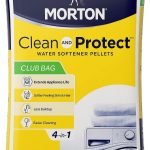


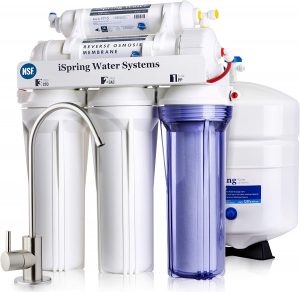
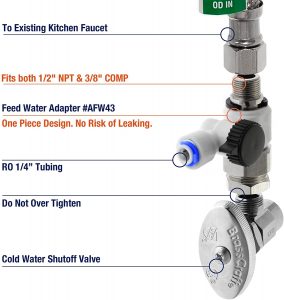

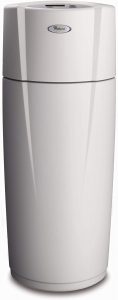
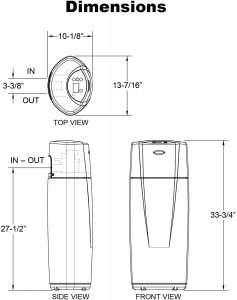
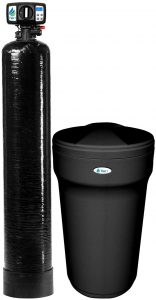







Add Comment